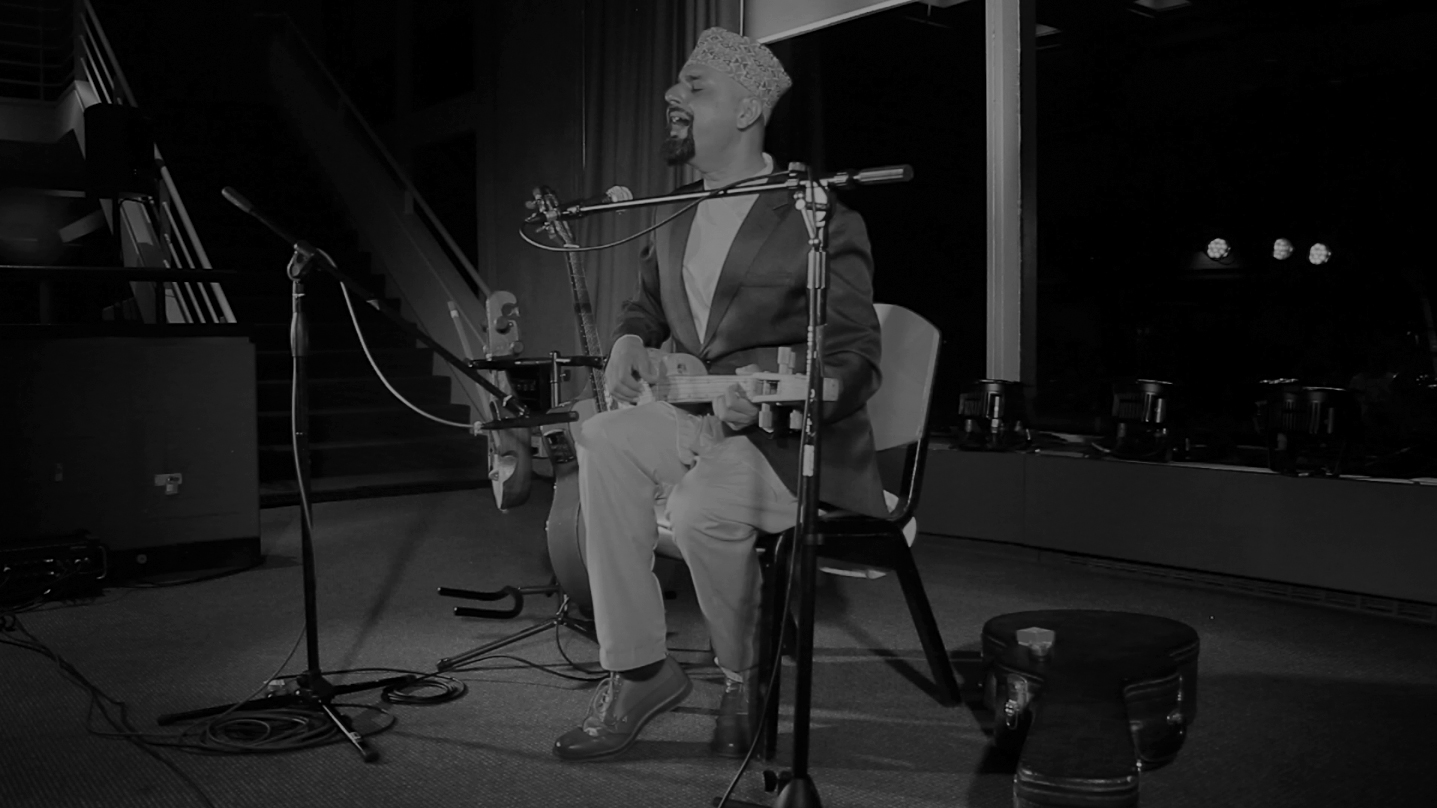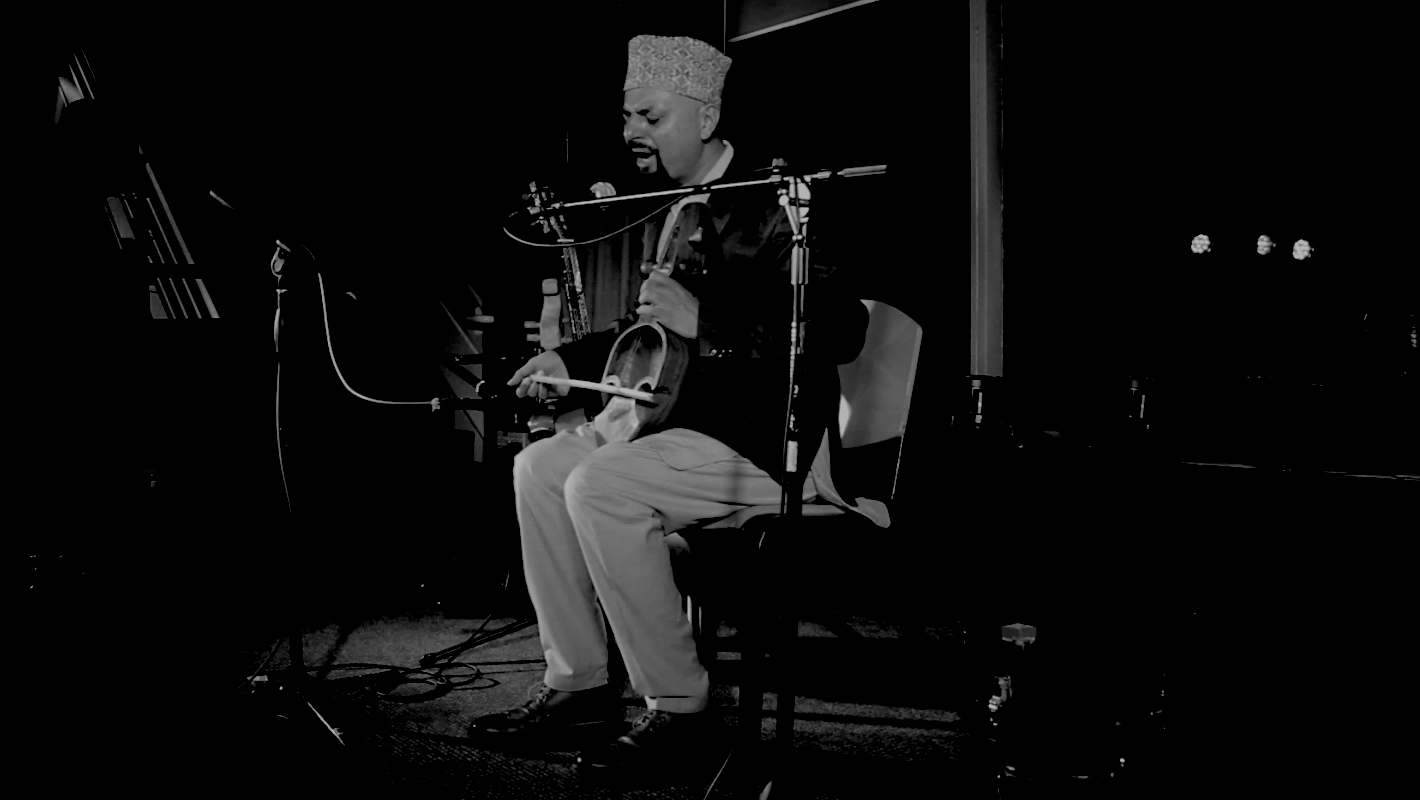 Lochan Rijal live in Massachusetts Institute of Technology (MIT)
Lochan Rijal live in Massachusetts Institute of Technology (MIT)
October 5, 2019. Cambridge, USA.
Posted on October 1, 2019 by Connie Blaszczyk
With 75 districts and at least as many ethnicities, Nepal is home to a diverse array of musical traditions that remain largely unknown outside the country. On October 5th, audiences will have a rare opportunity to hear the music of Nepal in आवाज (Raw Sounds), a public concert featuring Lochan Rijal. The ethnomusicologist and multi-instrumental singer-songwriter will perform original compositions on guitar and traditional Nepali instruments, including the Sarangi and the nearly extinct Gandharva lute arbaja that Rijal discovered during his research in Nepal. The program is part of the 2019–20 MIT Sounding series. The visiting artist residency is hosted by professor of history and head of the History faculty Jeffrey S. Ravel with support from MITeri, the Nepali student association at MIT.
“He’s a fantastic musician and musicologist,” says Ravel. “Rijal is leading the charge to preserve and grow Nepal’s rich musical heritage.”
During his residency, Rijal will give a public lecture and visit with 21M.030 Introduction to World Music and 21H.157 The Making of Modern South Asia. He’ll also participate in programs sponsored by MITeri for Nepali students at MIT and nearby universities.
“Many members of MITeri came around the world and competed successfully at the best engineering school in the world,” notes Ravel. “We’re incredibly excited to have this community meet with Lochan and share their culture with the broader MIT community and the general public.”
Rijal’s visit is an outgrowth of the MIT-Nepal Initiative, established in response to the 2015 earthquakes in Nepal’s Kathmandu Valley. Led by Professor Ravel and Special Advisor to the Vice President Aaron Weinberger, the initiative has sought to engage in projects that benefit the people of Nepal, and create enriching educational experiences for MIT researchers and students.
“The MIT-Nepal Initiative hopes to bring this rich cultural diversity to light, while we continue to address basic sustenance needs in Nepal through projects such a portable water-testing kit that is currently in development,” says Ravel.
Together, Rijal and Ravel are committed to preserving Nepal’s musical traditions. “We’re talking about the idea of creating an ethnographic atlas of the music of Nepal, which would include recordings, sheet music, and other archives,” says Ravel. As a joint project between MIT and Kathmandu University, Ravel says the atlas would serve as a “tremendous teaching tool, and a way to educate the larger public about Nepal’s rich cultural diversity.”
 Lochan Rijal live in Massachusetts Institute of Technology (MIT).
Lochan Rijal live in Massachusetts Institute of Technology (MIT).
October 5, 2019. Cambridge, USA.
Born in a remote village in eastern Nepal, Rijal grew up surrounded by music. “Drummers once started the day at 4am,” recalls Rijal. Traveling music minstrels shared stories of everyday life played on homemade instruments. Music was also an integral part of weddings and festivals. “Musicians were highly valued within Nepal’s then strict caste system,” notes Rijal. At the time, musicology wasn’t regarded as a viable field of study in the country.
As a young teen, Rijal bought a guitar and began writing songs. Later, when he left his home to attend boarding school, “music became my friend while I was far from home,” remembers Rijal. His musical talent found success in the pop and rock scene in Nepal.
When the time came to attend Kathmandu University, Rijal wanted to pursue a career in medicine, but a growing interest in musicology won out, leading to a doctorate in ethnomusicology at Kathmandu University and the University of Massachusetts Amherst in 2014. Returning to Nepal a year later, he found a country devastated by earthquakes—the university’s music department was completely destroyed.
Rijal quickly set about organizing local musicians in fundraising efforts to restore the lost school. His bold vision eventually led to the restoration of a heritage site, a temple called Tripura Sundari.
Located in the heart of Kathmandu, Tripura Sundari was built in 1818 by Queen Tripurasundari, in honor of her late husband. She is said to have been the first woman to publish literature in Nepal. The temple later fell into disrepair and became home to squatters; it was further damaged in the 2015 earthquake. Amid the ruins, Rijal saw great opportunity and asked, “Why not rebuild a tangible entity using one of Nepal’s heritage sites to archive and support its intangible musical heritage and traditions?”
With support from the Government of Nepal including Guthi Sansthan, National Reconstruction Authority, Department of Archaeology, and Ministry of Culture as well as financial support from the people and Government of Thailand, Kathmandu University Department of Music was given the green light to carry out the temple restoration project. Its mandate was clear, says Rijal. “We are creating a place to practice, document, preserve, communicate, appreciate and initiate the creative development of Nepal’s musical heritage.”
A labor of love, the temple restoration has involved local construction teams, project managers and artisans, including bricklayers, metal smiths and wood carvers, many of whom learned their skills from previous generations of Nepali craftspeople. Ultimately, the new department of ethnomusicology at Kathmandu University will connect local musicians with historians, professors and other specialists. Together, they will work to preserve and document Nepal’s rich musical traditions as well as bring Tripura Sundari and its customs to its former glory.
“Our ultimate goal,” says Rijal, “is to bring Nepal’s long lost cultural heritage to the world.” In the meantime, he welcomes everyone to visit the temple and join him on October 5th to celebrate the music of Nepal at MIT.
Source: ARTSATMIT